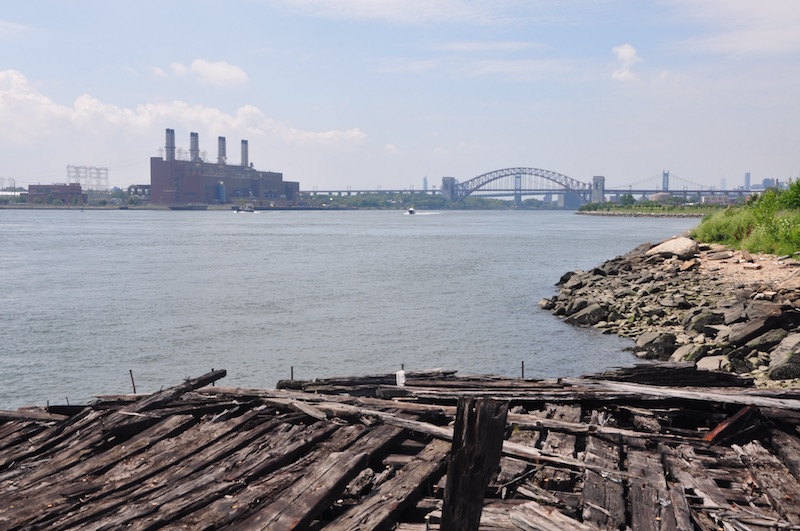As huge waterfront projects are being built around the South Bronx by private entities, community organizers and advocates are starting to look at the community land trust model to give ownership of some property and land to the community instead of private companies.
The most recent example of a community land trust acquiring city-owned land was the East Harlem El Barrio Community Land Trust, which obtained four city-owned buildings for renovation. Rather than participate in a bidding war, the East Harlem land trust was able to obtain the property from the city and has been constructing a $14 million housing project.
The trust movement has picked up recently with Mayor Bill de Blasio committing to expand CLTs last year, and through advocates and policy makers seeking to improve the process of letting these trusts gain control of these private or city-owned properties.
Community land trusts, or CLTs, are nonprofit, community-based organizations meant to ensure community ownership and supervision of land and any property on it. They are meant to keep new developing residential buildings “affordable” without a private company involved, but they are also used to redevelop vacant land/property for green and recreational spaces.
CLTs, which exist in many states, usually get funding from private grants and typically petition for funds from city and state governments. One example of a city granting eminent domain powers to a CLT in order to purchase a vacant lot happened in Boston. CLTs usually acquire land through purchase or foreclosure through funding they receive.
The Mott Haven-Port Morris Community Land Stewards, a CLT created in 2015, is sponsored by South Bronx Unite, a volunteer coalition that tackles social, economic and environmental issues, and a member of the NYC Community Land Initiative. It was created to acquire and hold real property for the community and to ensure that residents maintain some ownership in it after decades of environmental injustice and economic inequality.
It was also a response to Fresh Direct breaking ground in 2014 for its warehouse on the waterfront, cutting off options for public access to the waterfront for residents.
“(In the) same way most land trusts are formed to create deeply affordable housing, we’re looking at how we can also create other life-needed necessities to create a healthier community. And green space is one of those, because our community has been situated where there’s no access to green space,” said Mychal Johnson, co-founder of South Bronx Unite.
This is part of the reason Johnson and many others supported a greenway project that was proposed nearly a decade ago by the Bronx Council for Environmental Justice and the Harlem River Working Group.
The plans included a linear greenway that would extend and connect throughout the entire Harlem River and Bronx waterfront, resulting in waterfront access and recreational spaces for the public.
However, big private developing companies have bought up a lot of the waterfront land along the Harlem River for residential use, which stalled the plans.
The agreement that formalized the greenway plan stipulates that private sector owners along the waterfront would include a greenway or green space in their development plans – but until these residential buildings actually get completed, these plans remain simply plans.
Although the Fresh Direct warehouse was constructed after the greenway plan was agreed to, the company has not provided access to its green space or the waterfront for the public, says Chauncy Young, a member of the Bronx Council who led the initial greenway planning.
“As the prices of real estate go up, and they start to build housing and buildings on the waterfront, they will have to create that greenway piece. But until they see that as valuable, we unfortunately don’t have the access that we need,” said Young.
Several developments do include plans for green space in accord with the Bronx Council’s greenway project, including a connecting path along the Mott Haven-Port Morris waterfront.
Johnson says the trust was needed in order to continue to help materialize the plans they had envisioned, and to stop relying on private companies to develop and maintain these properties.
He and the Land Stewards are looking into activating their waterfront plan through the land trust method, which was prioritized by the Department of Environmental Conservation’s Open Space Plan back in 2016. Johnson says they have received some funds for outreach and planning but are awaiting more substantial funds for it.
Funding plays a crucial part, and it can take a long time to petition for land with the city. Still, the Mott Haven-Port Morris land trust appears poised to jump on any remaining vacant or foreclosed land along the Harlem River waterfront before it hits the real estate market.

